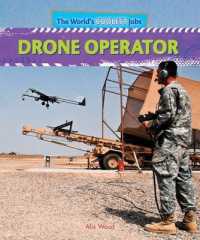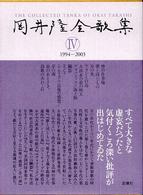Full Description
This book offers a new edition of the hugely successful title, Imaging & Technology in Urology--Principles and Clinical Applications edited by Steve Payne, Ian Eardley, Kieran O'Flynn in 2012. Essential reading for preparation of exit exams in Urology, it is used worldwide by exam candidates. Fully updated in essential areas of the book following on from recent developments in the last decade, it helps give preparation to candidates.
The most comprehensive and reliable source of information on this particular topic.
Contents
Part 1: Imaging Radiology.- Ch 1: Principles of X-ray production and radiation protection.- Ch 2: How to perform a clinical radiograph and use a C-arm.- Ch 3: Contrast agents.- Ch 4: Dual Energy X ray absorptiometry (DXA).- Ch 5: The physics of ultrasound and Doppler.- Ch 6: How to ultrasound a suspected renal mass.- Ch 7: How to ultrasound a painful testicle and mass.- Ch 8: How to do a trans-perineal ultrasound guided biopsy of the prostate.- Ch 9: How to manage an infected obstructed kidney.- Ch 10: Principles of computed tomography (CT).- Ch 11: How to do a CT urogram (CTU).- Ch 12: How to do a renal and adrenal CT.- Ch 13: How to do a CT in a patient with presumed upper tract trauma.- Ch 14: Principles of magnetic resonance imaging (MRI).- Ch 15: Safety in MR scanning.- Ch 16: Urological applications of MR scanning.- Ch 17: Vascular embolization techniques in urology.- Part 2: Imaging Nuclear Medicine.- Ch 18: Radionuclides and their uses in urology.- Ch 19: Counting and imaging in nuclear medicine.- Ch 20: Principles of Positron Emission Tomography (PET) scanning.- Ch 21: PET-CT imaging in prostate cancer.- Ch 22: Understanding the renogram - how it's done and how to interpret it.- Ch 23: The diuresis renogram - how it's done and how to interpret it.- Ch 24: Understanding the DMSA scan - how it's done and how to interpret it.- Ch 25: How to do a radioisotope glomerular filtration rate study.- Ch 26: Understanding the radionuclide bone scan - how it's done and how to interpret it.- Ch 27: Renography of the transplanted kidney - how it's done and how to interpret it.- Ch 28: Dynamic sentinel lymph node biopsy in penile cancer.- Part 3: Technology Diagnostic technology.- Ch 29: Urinalysis.- Ch 30: Principles of urine microscopy and micro-biological culture.- Ch 31: Urinary flow cytometry.- Ch 32: Urine cytology.- Ch 33: Histopathologial processing, staining and immuno-histochemistry.- Ch 34: Tumour markers.- Ch 35: Measurement of glomerular filtration rate (GFR).- Ch 36: Assessment of urinary tract stones.- Ch 37: Principles of pressure measurement.- Ch 38: Principles of measurement of urinary flow.- Ch 39: How to carry out a videocystometrogram (VCMG) in an adult.- Ch 40: Sphincter electromyography (EMG).- Part 4 Technology Operative.- Ch 41: Operating theatre safety.- Ch 42: Principles of decontamination.- Ch 43: Patient safety in the operating theatre environment.- Ch 44: Venous thromboembolic prevention.- Ch 45: Anticoagulants and their reversal.- Ch 46: Haemostatic agents, tissue sealants and adhesives.- Ch 47: Transfusion in urology.- Ch 48: Cell salvage in urological surgery.- Ch 49: Principles of urological endoscopes.- Ch 50: Rigid endoscope design.- Ch 51: Light Sources, light leads and camera systems.- Ch 52: Peripherals for endoscopic use.- Ch 53: Peripherals for laparoscopic use.- Ch 54: Peripherals for mechanical stone manipulation.- Ch 55: Sutures, staples and clips.- Ch 56: Contact lithotripters.- Ch 57: Monopolar diathermy.- Ch 58: Bipolar diathermy.- Ch 59: Alternatives to electro-surgery.- Ch 60: Operative tissue destruction.- Ch 61: Endoscopic use of laser energy.- Ch 62: Double J stents and nephrostomy.- Ch 63: Urinary catheters, design and usage.- Ch 64: Urological prosthetics.- Ch 65: Mesh in urological surgery.- Ch 66: Irrigant fluids and their hazards.- Ch 67: Insufflants and their hazards.- Ch 68: Laparoscopic ports.- Ch 69: Principles of robotic surgery.- Ch 70: Setting up robotic surgery.- Ch 71: Principles of tissue transfer for urologists. Part 5: Technology Interventional.- Ch 72: Neuromodulation by scaral nerve stimulation.- Ch 73: Principles of extracorporeal lithotripsy (ESWL).- Ch 74: How to carry out shockwave lithotripsy.- Ch 75: New technologies for BPH.- Ch 76: Ablative therapies.- Ch 77: Principles of radiotherapy.- Ch 78: Alternative radiotherapy techniques.- Ch 79: Augmented intravesical drug administration.- Part 6: Technology of renal failure.- Ch 80: Principles of renal replacement therapy (RRT).- Ch 81: Principles of peritoneal dialysis.- Ch 82: Haemodialysis.- Ch 83: Principles of renal transplantation.- Part 7: Assessment of technology.- Ch 84: Key concepts in the design of randomised controlled trials.- Ch 85: Reporting and Interpreting data from RCTs.- Ch 86: Health technology assessment (HTA).- Backmatter: Appendices.








